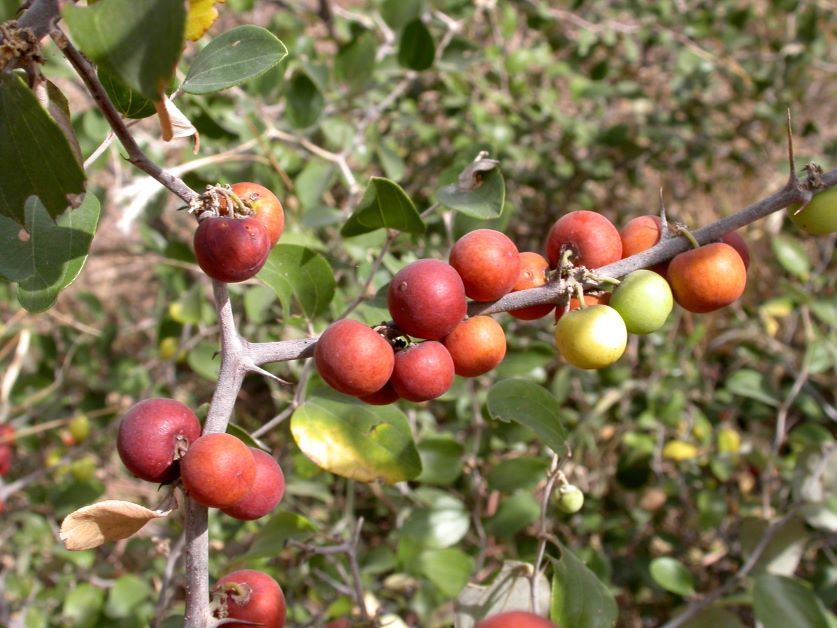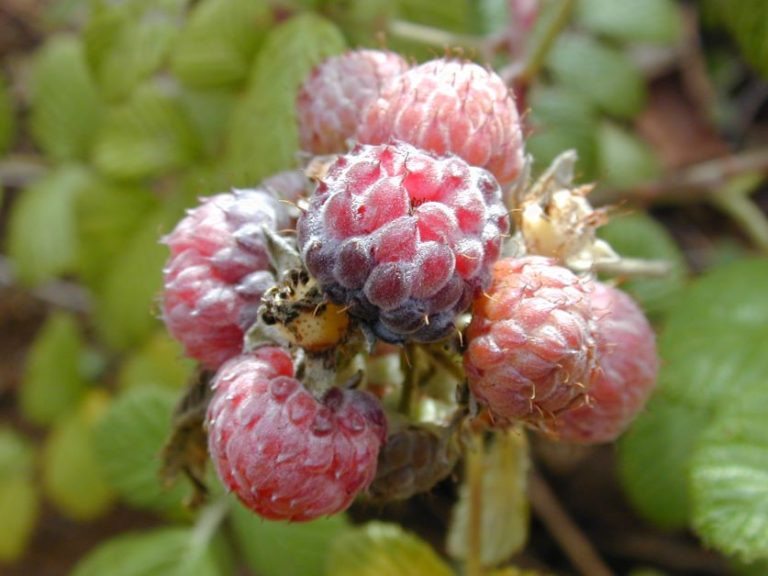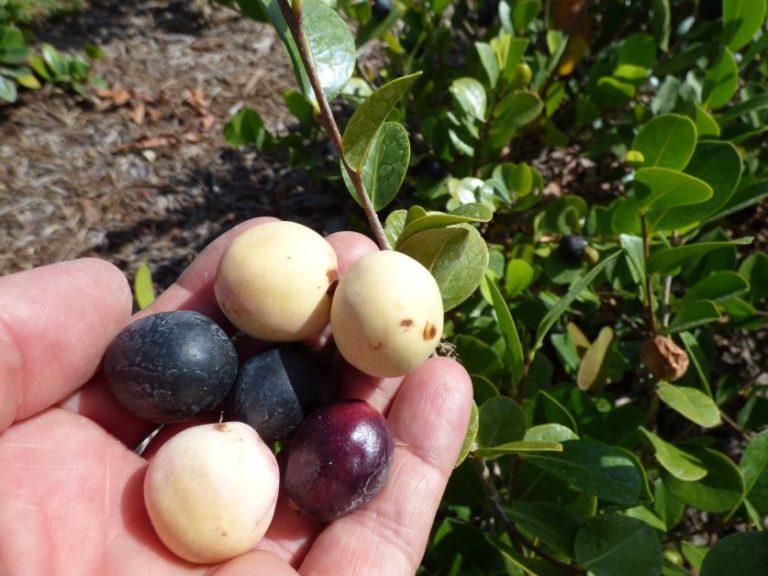How to Grow Indian Jujube
If you live in a tropical or subtropical climate and are looking for a fast growing fruit tree, Indian jujube might be for you. From seed to harvest, you should get your first Indian jujube harvest in just 3 to 5 years. If you buy a grafted Indian jujube tree, you can get fruit in 2 years.
What is Indian Jujube?
Indian jujube (Ziziphus mauritiana) is a tropical evergreen tree native to China, Afghanistan and Malaysia. This tree has oval leaves, fuzzy leaves and depending on the variety, it can have thorny branches.
Other names for Indian jujube include:
- Indian plum
- Indian date
- Malay jujube
- Ber fruit
- Mangustine
- Indian cherry
- Coolie plum
- Chinese date
- Chinese apple
- Dunks
If left to its own devices, an Indian jujube tree can grow 40 to 50 feet tall. Some people, however, chose to prune their trees to grow small and shrub-like. There are more than 90 varieties of Indian jujube, with the most popular being Thai giant, Banarasi, Kaithli, and Mudia Murhara.
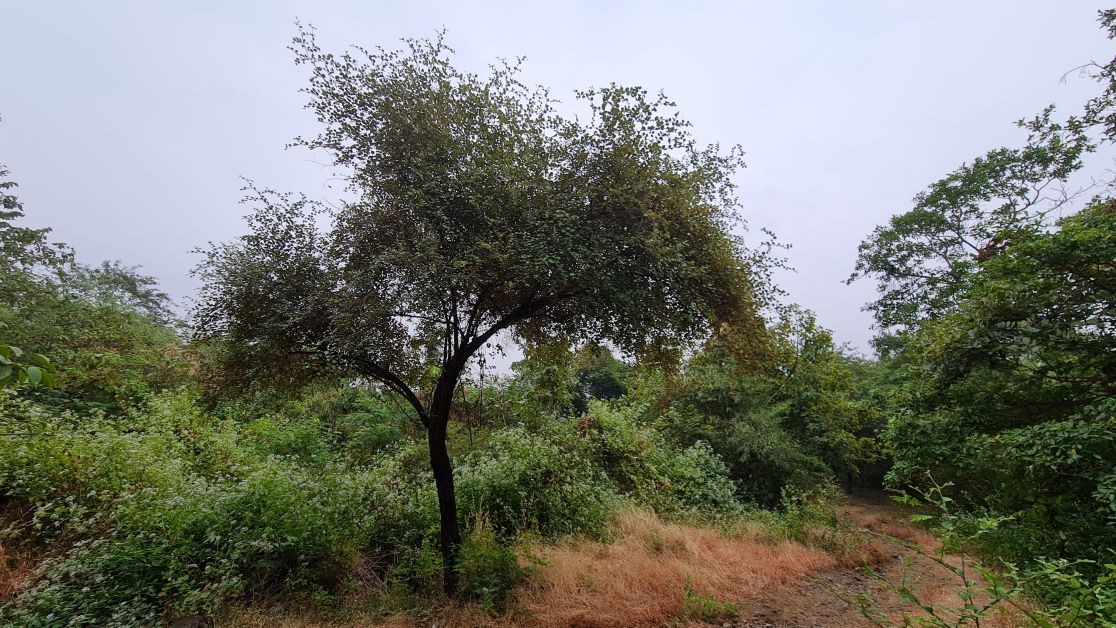
Indian jujube is self-fertile, which means you only need 1 tree to produce fruit. Indian jujube flowers are small, yellowish-green, and have 5 petals. When pollinated, these flowers turn into drupes. Drupes are fruit with a pit in the middle. Other tropical drupes include rose apples, peanut butter fruit, cocoplum, and Barbados cherries.
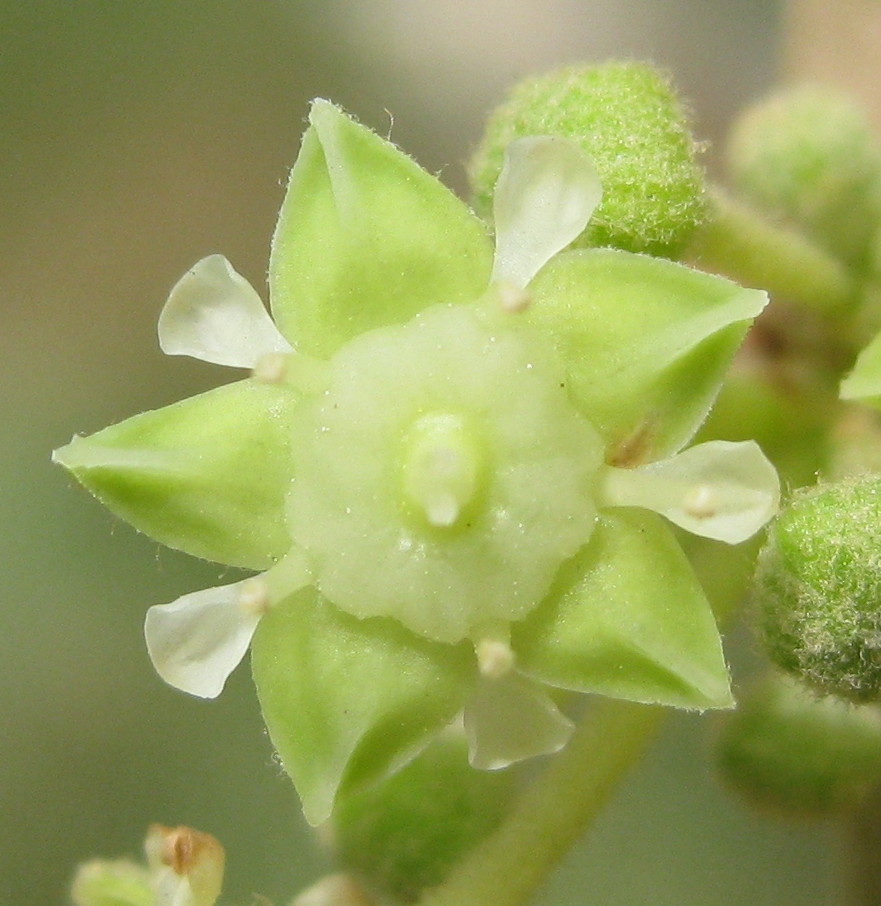
Indian jujube harvest season depends on your climate and the variety you’re growing. Most of the time, Ithough, the harvest season is from fall through winter. This is a generous producer – just 1 Indian jujube tree can yield more than 100 lbs of fruit over the course of 1 season.
How to Eat Indian Jujube
Indian jujube fruit can be eaten in 3 stages: unripe, ripe, and overripe.
Unripe Indian jujube has tight, light green skin and is firm. It has a texture and flavor reminiscent of an apple. They are somewhat tart and a bit like a crabapple.
Ripe Indian jujube is yellow with patches of brown. It tastes a little more fermented than unripe jujube and has a mealy texture.
Overripe Indian jujube is orange-brown, sometimes wrinkly, and has an airy texture. They’re comparable to a date. Some people love overripe Indian jujubes while others say they taste old and musty.
Indian Jujube vs. Chinese Jujube
There are more than 1 type of jujube fruit – the Indian jujube and the Chinese jujube. Although these fruit are similar, they aren’t the same.
Chinese jujube (Ziziphus jujube) is a jujube fruit grown in temperate climates while Indian jujube is tropical. Because it’s better adapted to grow in cooler climates, Chinese jujube is the hardier of the 2 species. Chinese jujube can grow in temperatures as low as 5F while Indian jujube suffers if the temperature dips to 44F.
The easiest way to tell the difference between Indian jujube and Chinese jujube is to look at the leaves. Indian jujube leaves are covered in suede-like hairs while Chinese jujube leaves are smooth and shiny. Indian jujube leaves are also bigger than the Chinese type. In addition, Chinese jujube trees usually have bigger thorns, too.
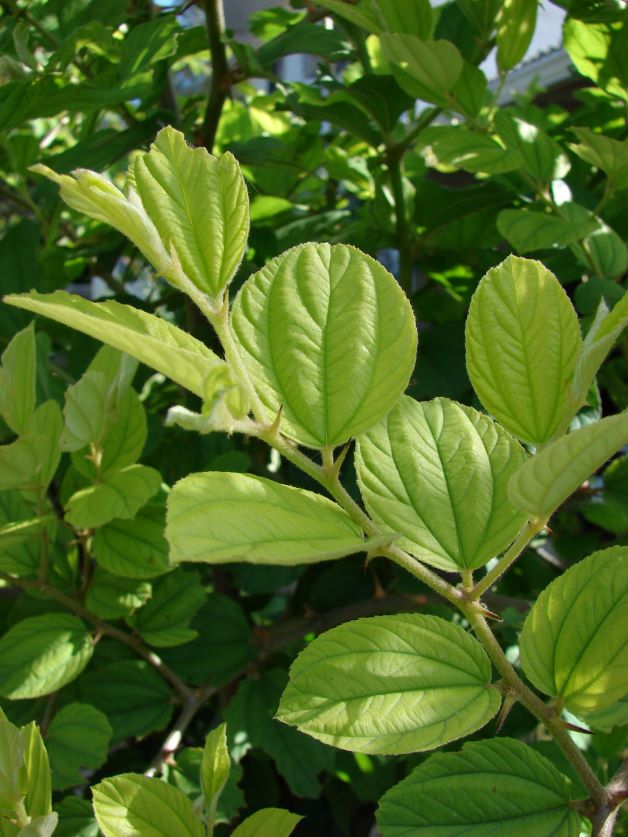
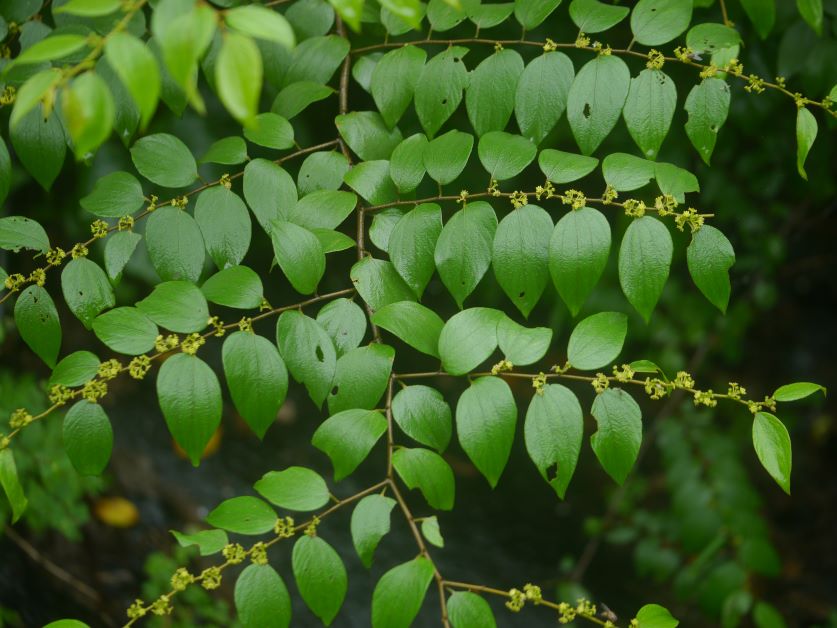
How to Plant Indian Jujube
You can plant Indian jujube from seed or as a live tree. Planting a live tree is quicker than growing from seed, but live trees are a lot more expensive (although the expense might be worth it for faster fruit).
Indian jujube is easy to grow from seed but it still takes between 7 and 30 days for an Indian jujube seed to germinate. Seeds that are still inside their shell will take the longest to germinate. Those that are removed from their shell can sprout in just a week. When starting off, be sure to plant more seeds than you think you need because not all will germinate.
How to Plant Indian Jujube by Seed:
- Fill a tree starter pot with high-quality potting mix.
- Bury your Indian jujube seed ½ inch deep.
- Water your seed and keep it in a sunny spot that’s about 75F. I keep my seedlings inside my Florida carport. My carport allows my seedlings to get some fresh air and warm temperatures, but it also provides some protection from the harshest afternoon rays.
- Keep your soil moist but not soggy.
- When your seedling is about 6 inches tall, harden it off by gradually introducing it to stronger sunlight and higher temperatures.
- Amend your planting area with oak leaf compost and allow the compost to incorporate for 2 weeks while you harden off your seedling.
- After 2 weeks, it’s time to transplant your seedling into the ground. Dig a hole as deep as your pot and carefully remove your seedling from the pot and into the hole. Backfill the hole with the soil you removed and water your seedling heavily.
- Place a 2-inch thick ring of mulch around your seedling, giving your seedling an inch or 2 of space between its base and the mulch (mulching right up to the base of your seedling will cause it to get soggy).
- Until your tree is established, keep the soil moist but not soggy.
Indian Jujube Growing Conditions
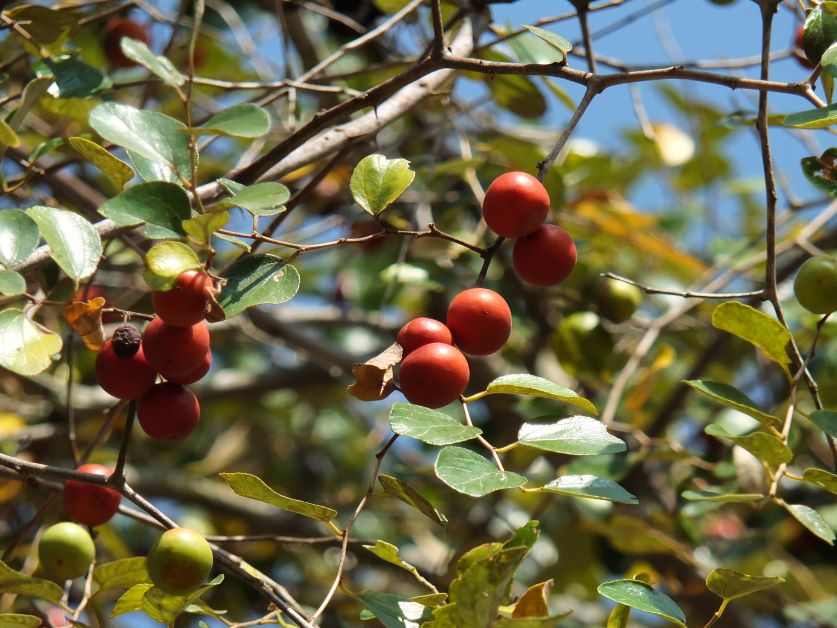
Light
Indian jujube is a full sun plant and needs at least 6 hours of sunlight a day.
Temperature
Indian jujube is hardy to USDA zones 5-11, but the hotter it is, the better. Most of the Indian jujube trees grown in the US are found in Florida, California, Texas, and Hawaii. Mature Indian jujube trees can take some frost and even a few freezes. This tropical tree, however, thrives in hot weather and withstands temperatures higher than 100F.
Water
Although Indian jujube is drought-tolerant, it grows best when it’s grown in a climate that has a wet season and a dry season. This makes Indian jujube a perfect fruit tree for Florida since our summers are rainy and our winters are dry.
If you don’t live in a climate that has a wet and dry season, water your Indian jujube tree every 2 or 3 days in the spring and summer once every 1 to 2 weeks during fall and winter. If your fruit is dropping off before they’re ready, this is a sign that your tree needs more water.
Soil
Although it does best in sandy loam, Indian jujube isn’t picky about its soil as long as it’s well-draining. It also prefers neutral to slightly alkaline soil. It’s moderately salt-tolerant.
Fertilizer
Feed your Indian jujube once in early spring with organic fruit tree fertilizer.
Pruning
Pruning isn’t mandatory when growing Indian jujube, but it can make it easier to harvest your fruit – the taller your tree, the higher up your fruit. On the flip side, the smaller your tree, the smaller your yield will be.
During the first year of growth, cut off any branches that grow on the lower 30 inches of your trunk. After the first year, top your tree to encourage it to grow back healthy and strong. To keep your tree small and shrub-like, prune it into your desired shape after harvesting. Because the tree is so thorny, you may want to wear rose pruning gloves to protect yourself from getting stuck.
Pruning can also help improve your tree’s health if you’re battling fungal disease. As your tree grows, remove the bottommost branches and suckers to improve airflow and cut down on powdery mildew.
Harvesting
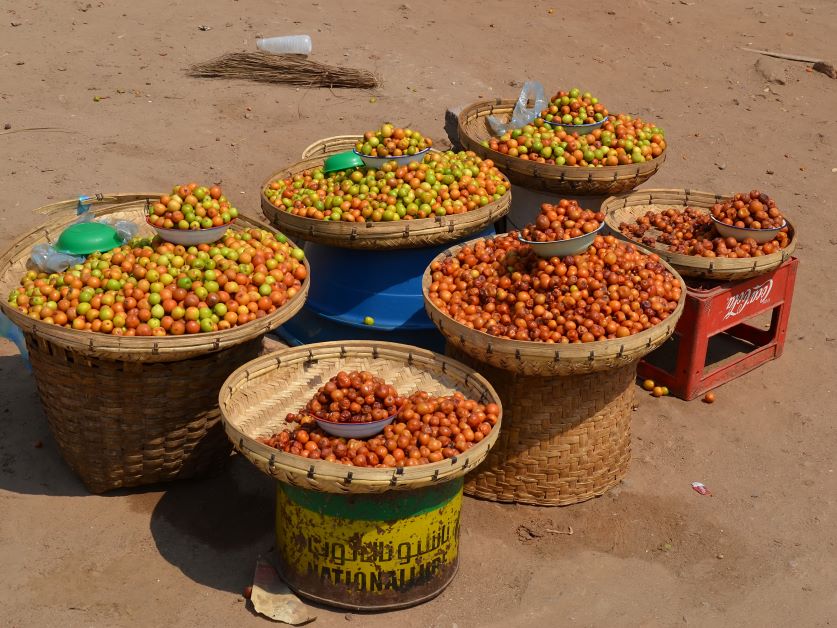
Indian jujube fruits ripen gradually. You could have unripe, ripe, and overripe fruit all on one tree at the same time. When you harvest your fruit depends on which stage you’d like to eat it (unripe, ripe, or overripe).
If your tree is tall, you’ll need to climb a ladder to get the most out of your harvest. Instead of climbing, some people shake their trees and collect the fruit that drops to the ground. Just like when you’re pruning, wear gloves when harvesting your fruit to avoid getting stuck by thorns.
Indian jujube fruits ripen after they’re picked. It takes about a week for unripe jujube to turn ripe if you store them at room temperature.
Can You Grow Indian Jujube in a Container?
Yes, you can grow Indian jujube in a container. The smaller your container, the smaller your tree will be. Choose a well-draining container that’s at least 5 gallons large and fill it with high-quality potting mix.
Growing Indian jujube in a pot is a good choice for gardeners who live in cool weather climates. If you live in an area that gets a true winter, keep your Indian jujube outside during the summer and bring it inside during fall, winter, and early spring. Just be sure to keep your Indian jujube container away from drafty spots like doors and windows.
Is Indian Jujube Invasive?
Yes, Indian jujube can be invasive. While it’s not considered invasive in Florida (yet), it is on the invasive species list in parts of Australia.
Birds and mammals love to eat Indian jujube fruit. When these critters eat jujube fruit, they excrete the seeds in their waste. These seeds then germinate and become a new Indian jujube tree. To reduce the chances of your Indian jujube from spreading, you can cover your tree in bird netting.
Indian jujube also produces shoots from its roots, so you’ll find smaller trees growing up around the larger, main tree. You can grow your Indian jujube in a container to avoid this, or spend time pulling up new shoots as they grow.
Troubleshooting
Indian Jujube Pests
Fruit Flies
Fruit flies can be a problem with Indian jujube. The best way to cut down on fruit flies is to harvest your fruit regularly. Additionally, a healthy, grafted Indian jujube tree can produce 30,000 fruit. Suffice it to say, it can be hard if not impossible to harvest all of your fruit before it falls off and rots. Always discard rotting fruit because rotting fruit is a major target for fruit flies and pests.
Indian Jujube Diseases
Powdery Mildew
Like most tropical plants, Indian jujube is susceptible to powdery mildew. The best way to fight powdery mildew and other fungal diseases is to prevent them in the first place.
Some ways to reduce powdery mildew are to:
- Water your tree at the base instead of on the leaves. Using a water wand or drip irrigation will help.
- Water your tree in the morning instead of at night. Watering your tree in the morning will give it time to dry out during the afternoon and will also help cut down on slugs.
- Make sure your Indian jujube gets enough sun. Not only will your tree produce more fruit the more sun it gets, but sunlight will help keep your foliage dry.
- Prune off excess foliage.
- Give your Indian jujube enough space. Don’t crowd your plants because this will impede airflow.
- Apply a treatment of organic copper fungicide a few times during the spring. Do know, though, that while copper fungicide can help prevent powdery mildew, it doesn’t do much to treat the disease once your tree contracts it.
Featured image photo credit: CIFOR

